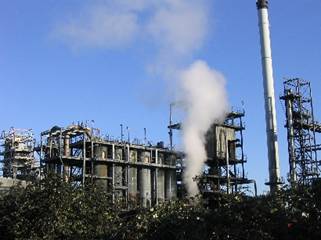How do externalities affect allocative efficiency?
 Syllabus: Describe the meaning of externalities as the failure of the market to achieve a social
Syllabus: Describe the meaning of externalities as the failure of the market to achieve a social
optimum where MSB = MSC.
| Allocative efficiency is when resources are allocated to their most valued use as in the best use for society as a whole - Social Optimum |
Allocative efficiency automatically occurs where price equals marginal cost (P=MC) in all markets, assuming that neither negative nor positive externalities are present.
| Why MUST price equal Marginal cost for there to be an efficient allocation of resources? Price = MC for efficient allocation of resources Private Cost = cost to procucer or comsumer only External Cost = cost to 3rd parties Social Cost = private costs + external costs |
The price of a good reflects the value (the benefits gained) consumers place on consuming each unit of a good. The Marginal Cost is the full cost (including normal profit) society has to pay to produce each unit of a good (or service).
If Price > MC more of the good will be produced and as each unit is consumed the value reduces and the cost increases until Price = MC.
If Price < MC then less of the good will be produced and the value of the last unit produced and consumed will be greater and the cost of production (for the last unit produced) will be less until Price = MC. Therefore there will be production and consumption adjustments until Price = MC.
For
most goods only private costs and benefits are involved therefore the
market equilibrium is at the Social Optimum and P= MSC (Marginal Social
Cost)
Effect of Externalities
The problem when significant
externalities exist is that the effects of consumer and producer
actions on other people (3rd parties) are not considered when
production and consumption decisions are made. Consequently there is no
mechanism (method) to bring the market to an equilibrium at the social
optimum level of output. Resources are misallocated in that case.
Consider the case of a firm
which produces paper and discharges its waste products into a river.
Such a firm would be treating the environment as a free resource, and
would be imposing a cost on society greater than just the costs paid
for factors of production needed to produce the paper. The price
charged to consumers would not therefore reflect the true cost of the
product; if the firm were compelled to install equipment which could
treat its effluence and make it harmless to the environment, its
production costs would increase; therefore its selling prices would
rise and consumers would reduce their demand. Resources would then be
reallocated away from the production of paper from this firm and
towards other markets. Because the firm does not pay the environmental costs of production prices
are lower than the Social Optimum, quantity produced is higherthan the
Social Optimum and resource allocation to this market is higher than
the Social Optimum.
In this case there is a divergence (gap) between private costs and social costs.
- The private cost is the internal money cost of production incurred by the firm i.e. costs (for Land, Labour, Capital and the Entrepreneuer) such as raw materials, wages, machinery and normal profit that must be paid to carry out production.
- The social cost, on the other hand, is the real (full) cost to society as a whole; it is the private, internal costs to the firm plus the value of the negative externalities (external costs). Social costs = Private costs plus external costs, remember:
Social cost
Social cost is the private (internal) cost plus the value of negative externalities.
Social benefit
Social benefit is the private (internal) benefits plus the value of positive externalities.
The significance of this analysis is that allocative inefficiency will occur if private cost or benefit diverges from social cost or benefit. Where externalities exist the condition for allocative efficiency is that price = social marginal cost i.e. the price must equal the true marginal cost of production to society as a whole, rather than just the private marginal cost.
|
Hence externalities cause market failure:
|
